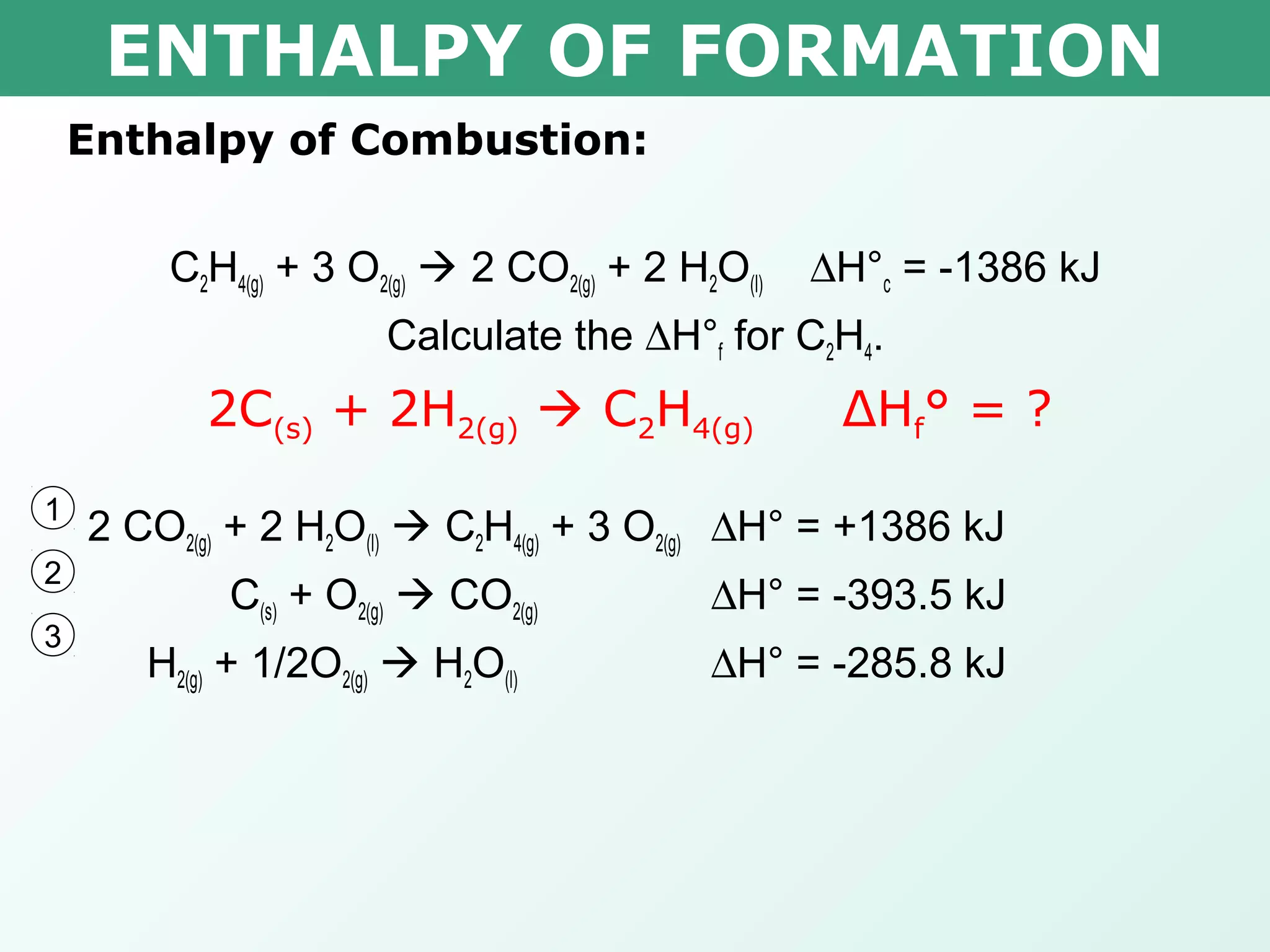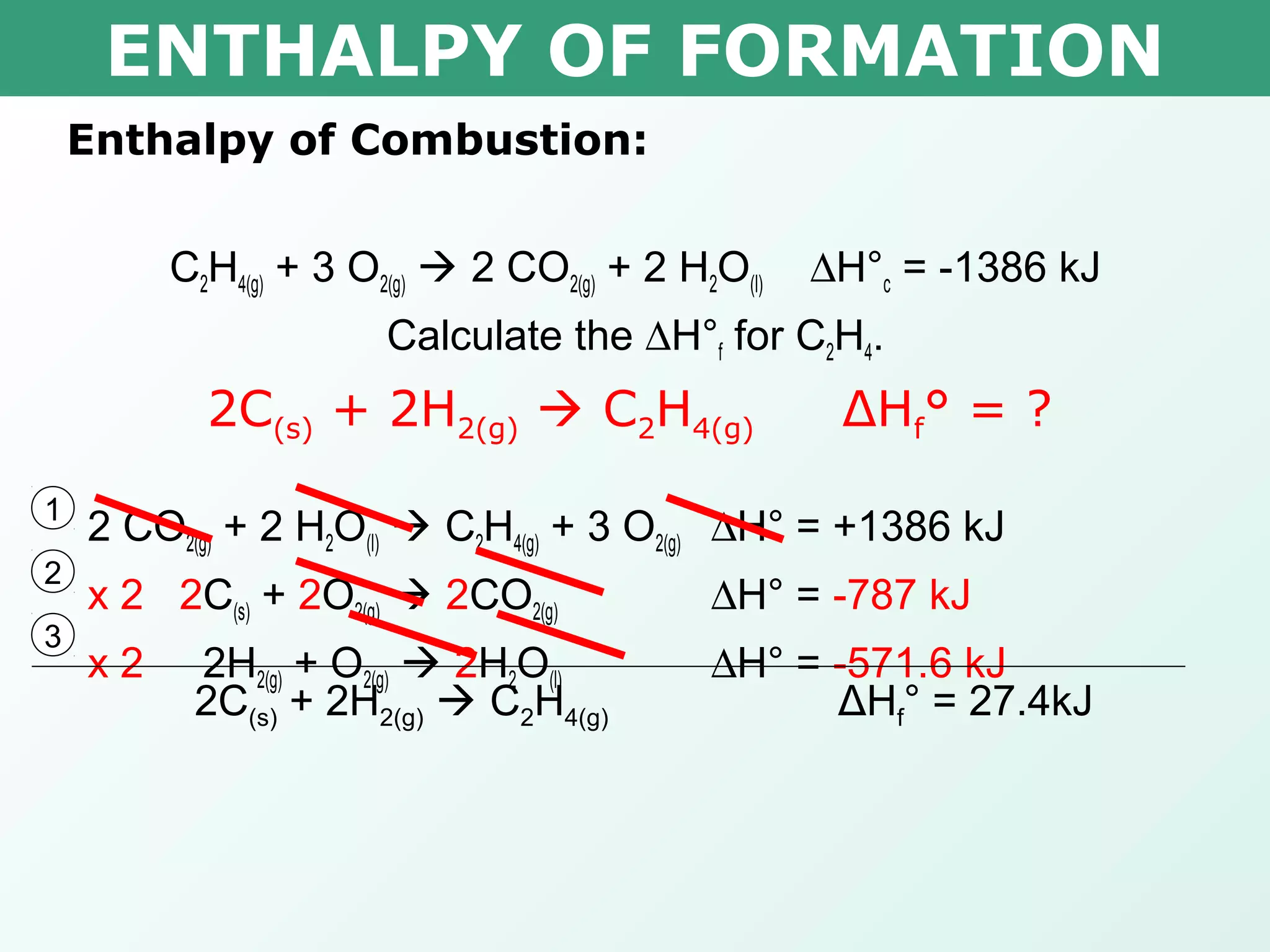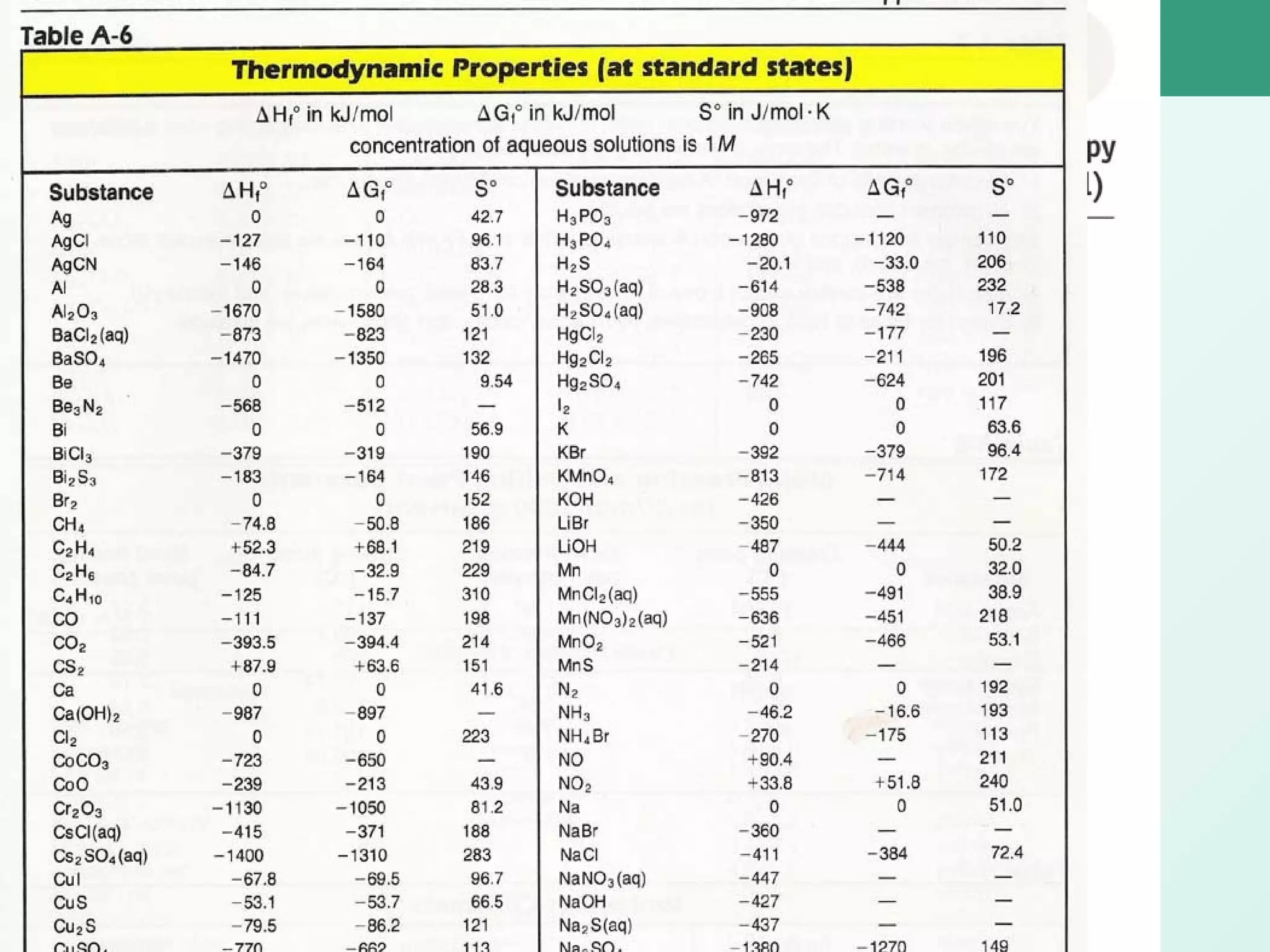The document defines standard enthalpy of formation (ΔHf°) as the amount of heat absorbed or released when one mole of a substance is formed from its elements in their standard states at 25°C and 100kPa. ΔHf° values are used to calculate the enthalpy change (ΔH°) of a chemical reaction. Examples are provided to demonstrate how to determine the ΔHf° of a compound from combustion reactions and how to calculate ΔH° from the ΔHf° values of reactants and products.

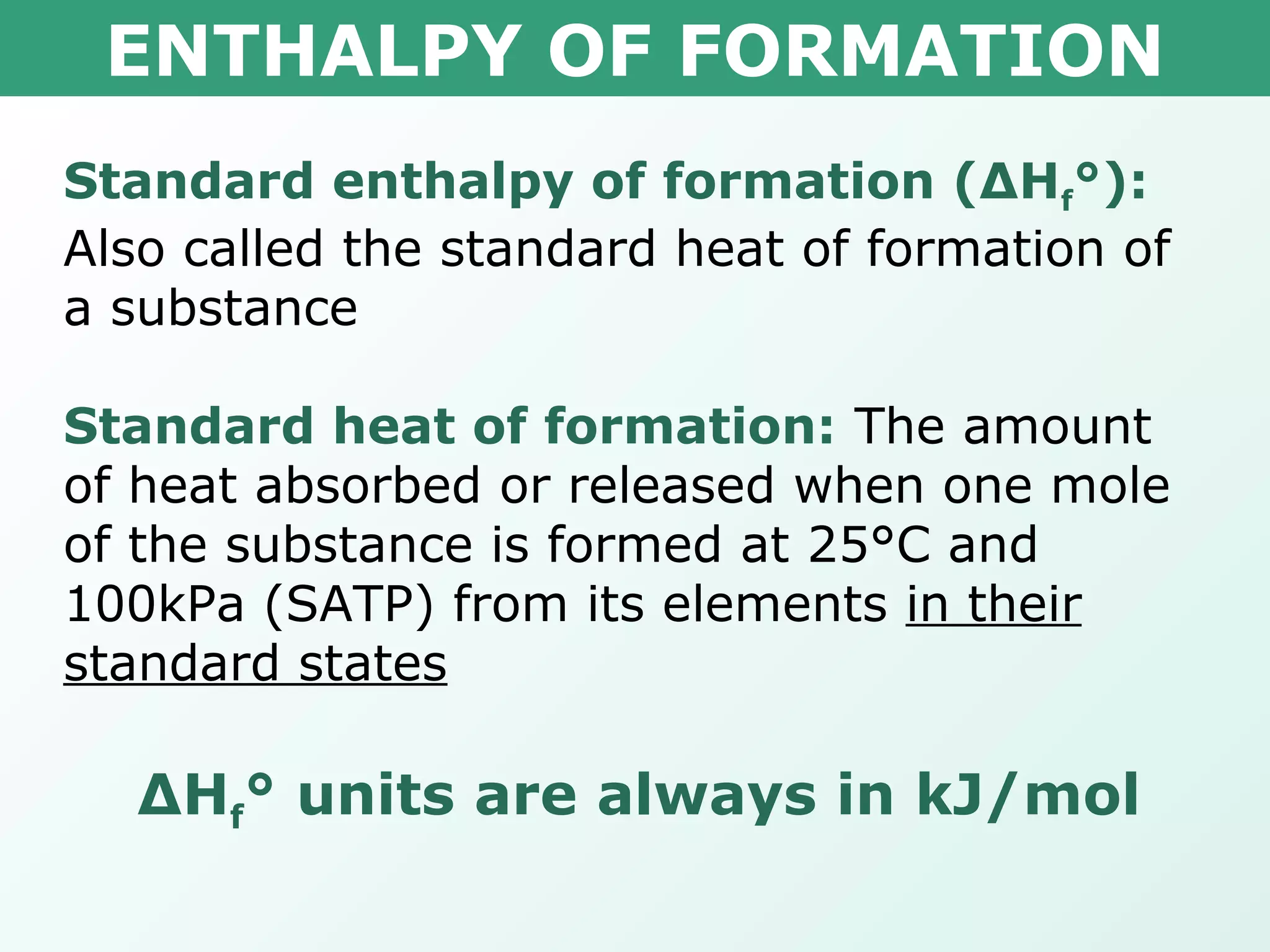
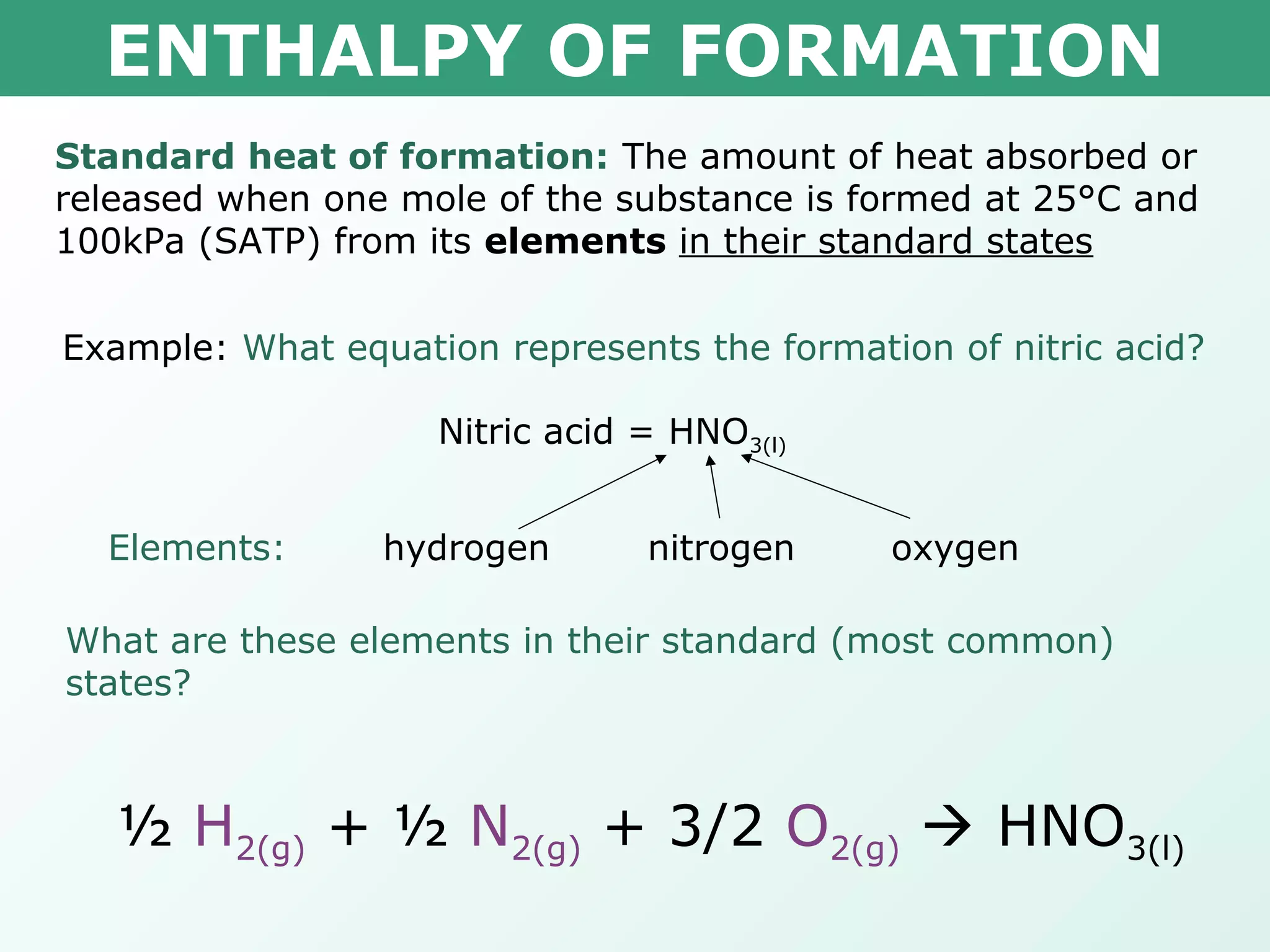

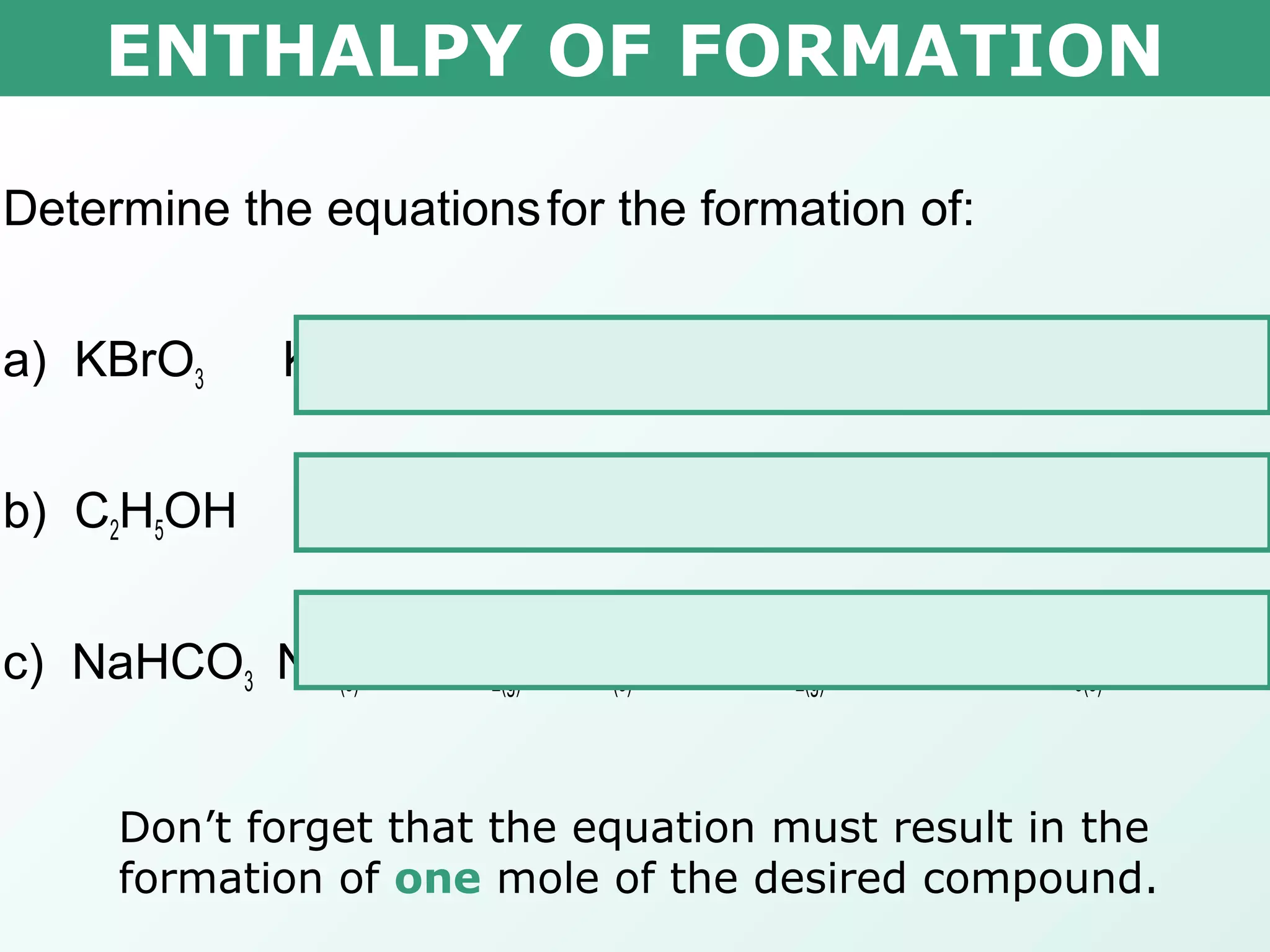
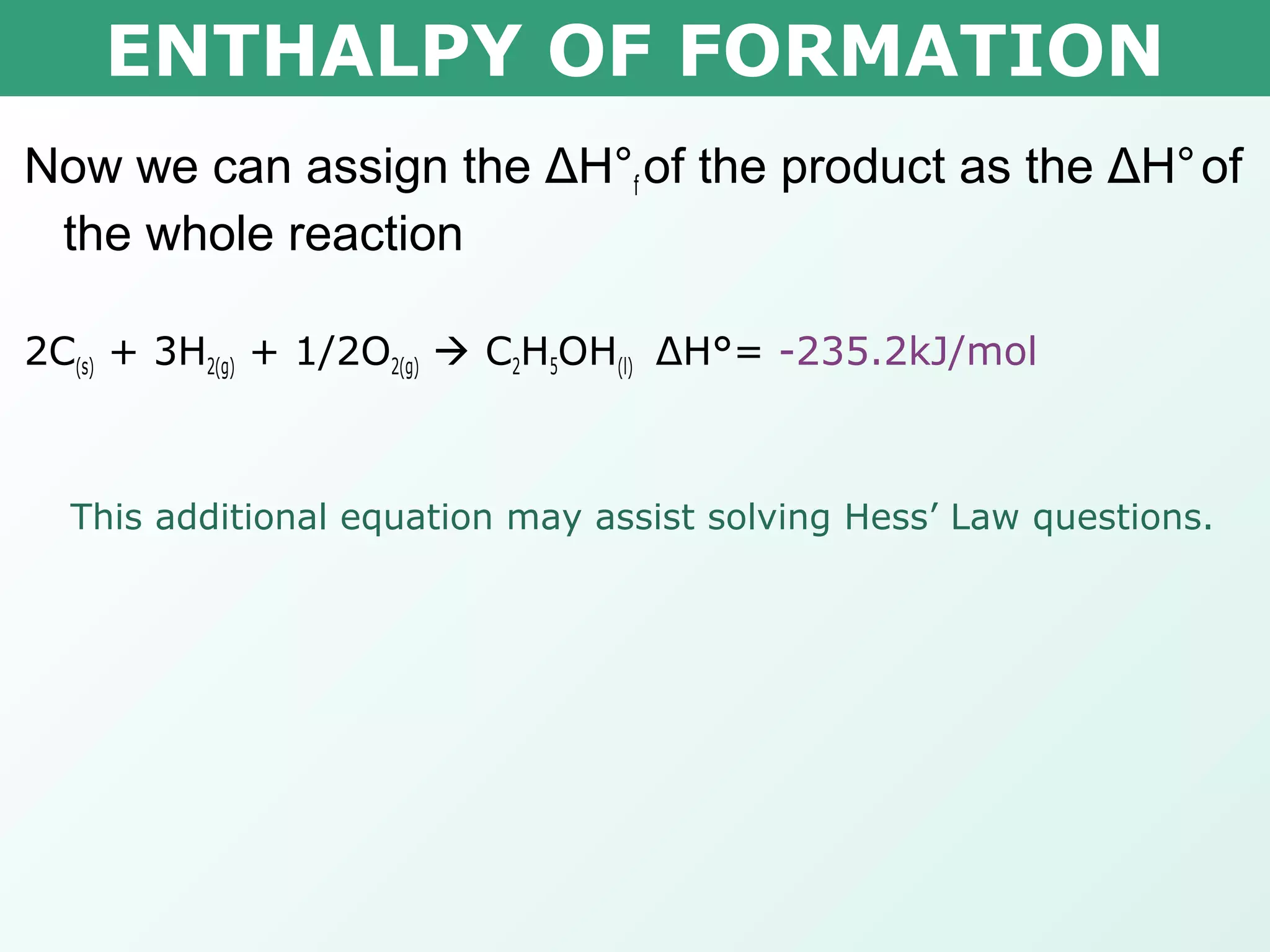
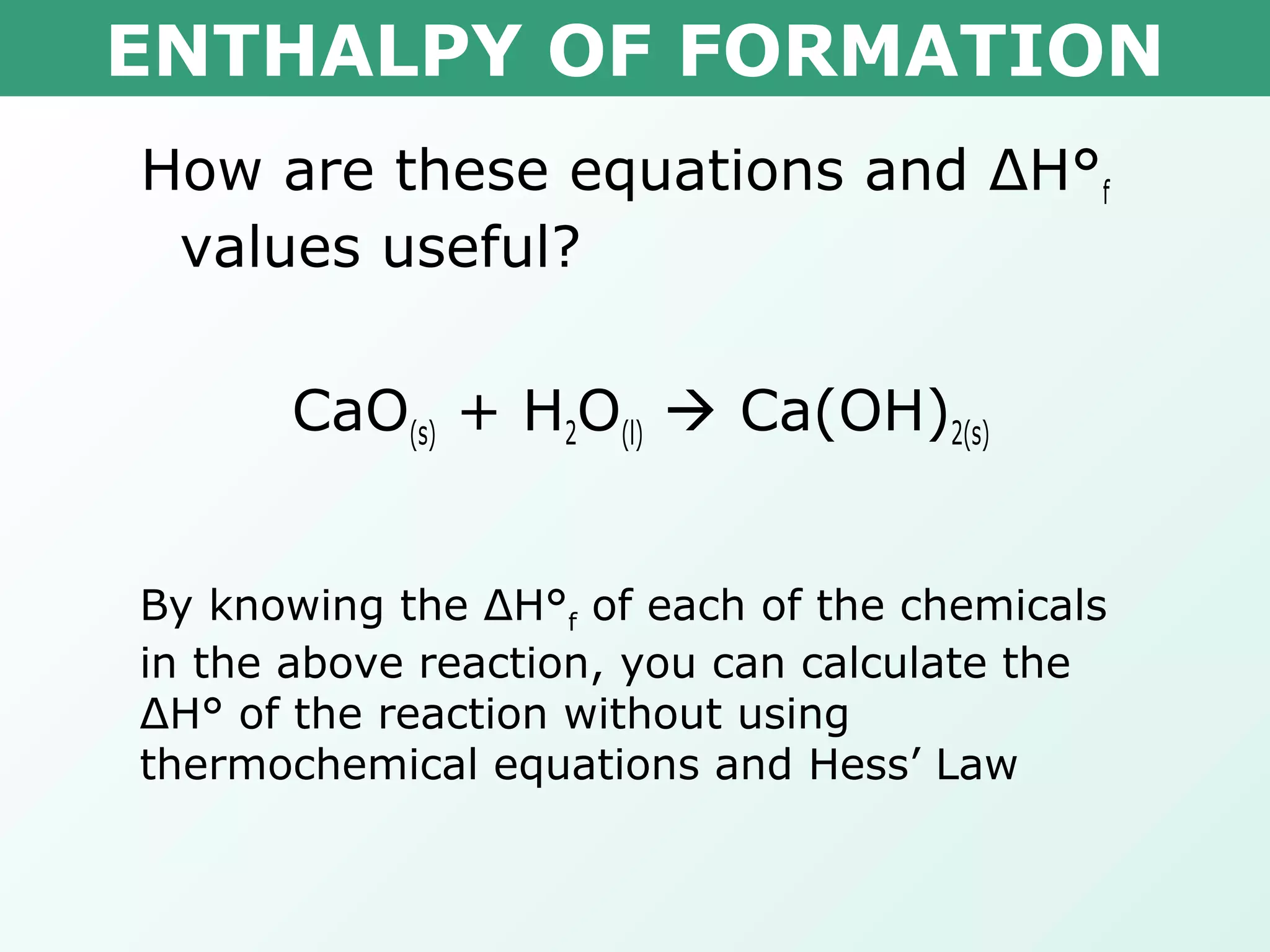
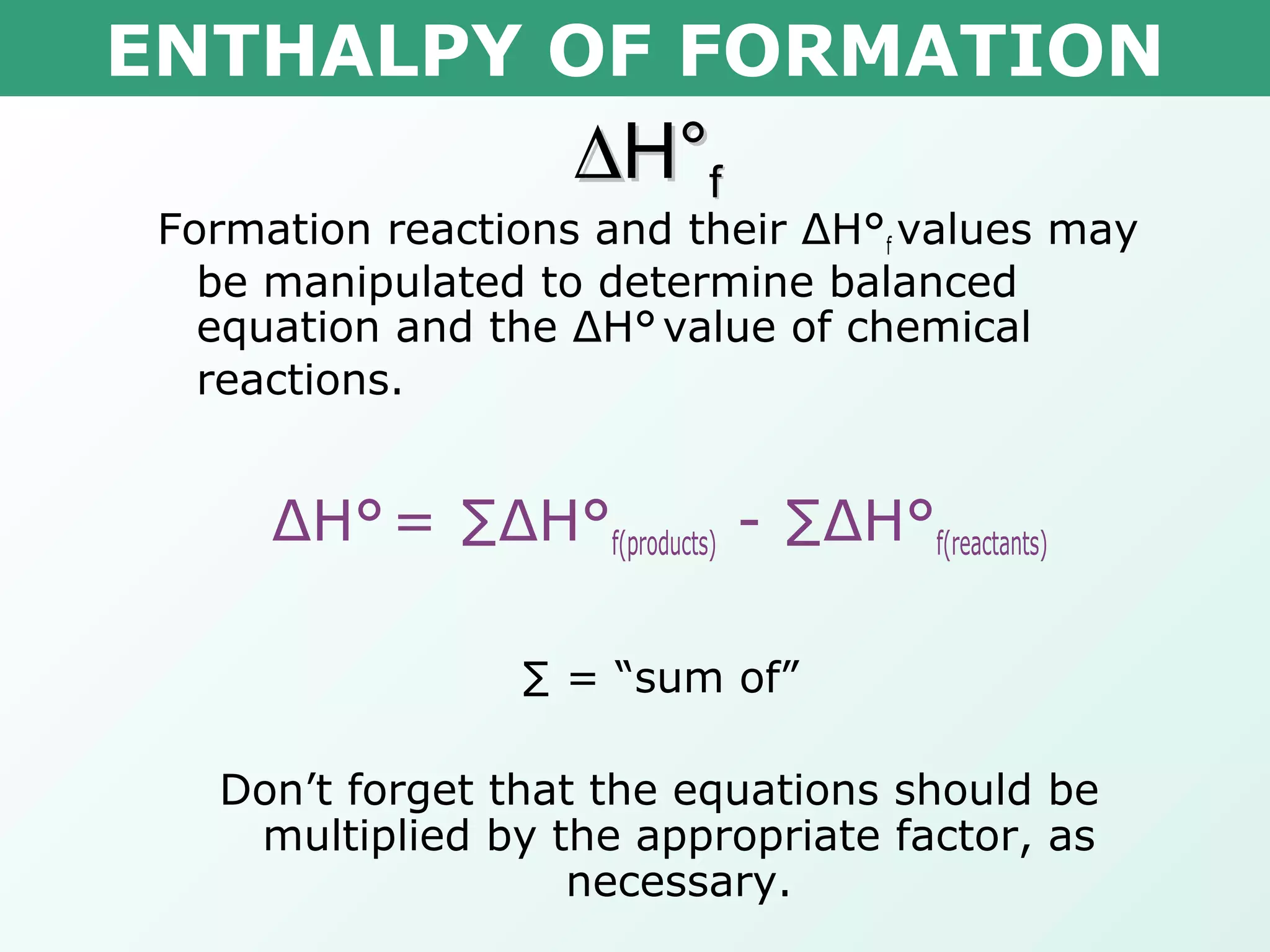
![ENTHALPY OF FORMATION
Using ΔH°f values, calculate the ΔH° of combustion
of one mole of ethanol to produce carbon dioxide
gas and liquid water.
C2H5OH(l) + O2(g) CO2(g) + H2O(l)3 2 3
-235.2kJ/mol 0.0000kJ/mol -393.5kJ/mol -285.8kJ/mol
ΔH° = ∑ΔH°f(products) - ∑ΔH°f(reactants)
= [(2 mol x -393.5kJ/mol) + (3 mol x -285.8kJ/mol)]
– [(1 mol x -235.2kJ/mol) + (3 mol x 0.0000kJ/mol)]
= -1644.4kJ – (-235.2kJ)
= -1409.2kJ
Since this equation already combusts 1 mole of ethanol, then the final answer is:
Therefore the heat of combustion is -1409kJ/mol of](https://image.slidesharecdn.com/tang03-enthalpyofformationandcombustion-151023164414-lva1-app6891/75/Tang-03-enthalpy-of-formation-and-combustion-9-2048.jpg)
![ENTHALPY OF FORMATION
Using ΔH°f values, calculate the ΔH° for the following
reaction:
NaOH(s) + HCl(g) NaCl(s) + H2O(l)
-425.6kJ/mol -92.30kJ/mol -411.2kJ/mol -285.8kJ/mol
ΔH° = ∑ΔH°f(products) - ∑ΔH°f(reactants)
= [(1 mol x –411.2kJ/mol) + (1 mol x -285.8kJ/mol)]
– [(1 mol x -425.6kJ/mol) + (1 mol x -92.30kJ/mol)]
= -697.0kJ – (-517.9kJ)
= -179.1kJ
Therefore the heat of the reaction is -179.1kJ](https://image.slidesharecdn.com/tang03-enthalpyofformationandcombustion-151023164414-lva1-app6891/75/Tang-03-enthalpy-of-formation-and-combustion-10-2048.jpg)

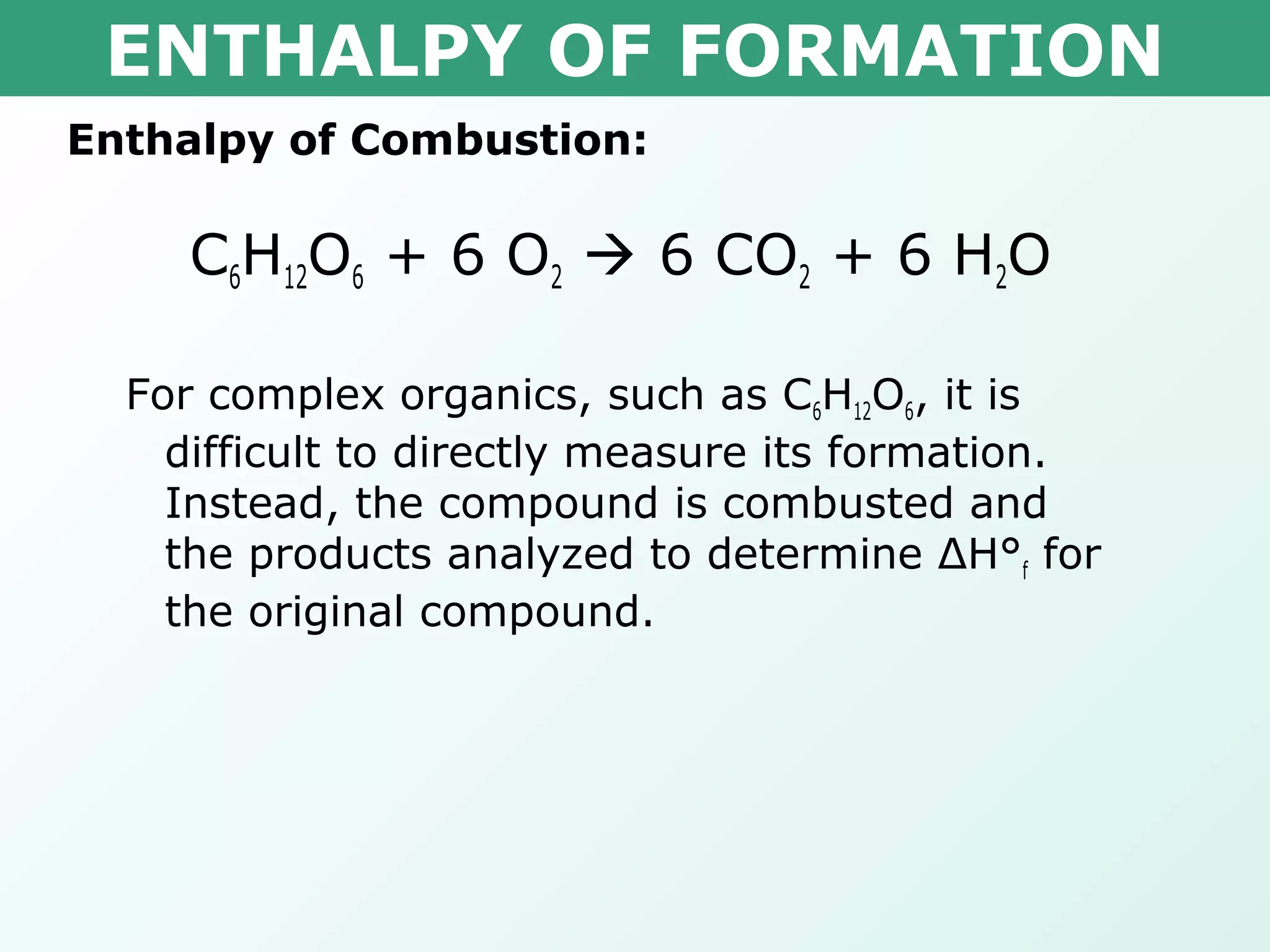
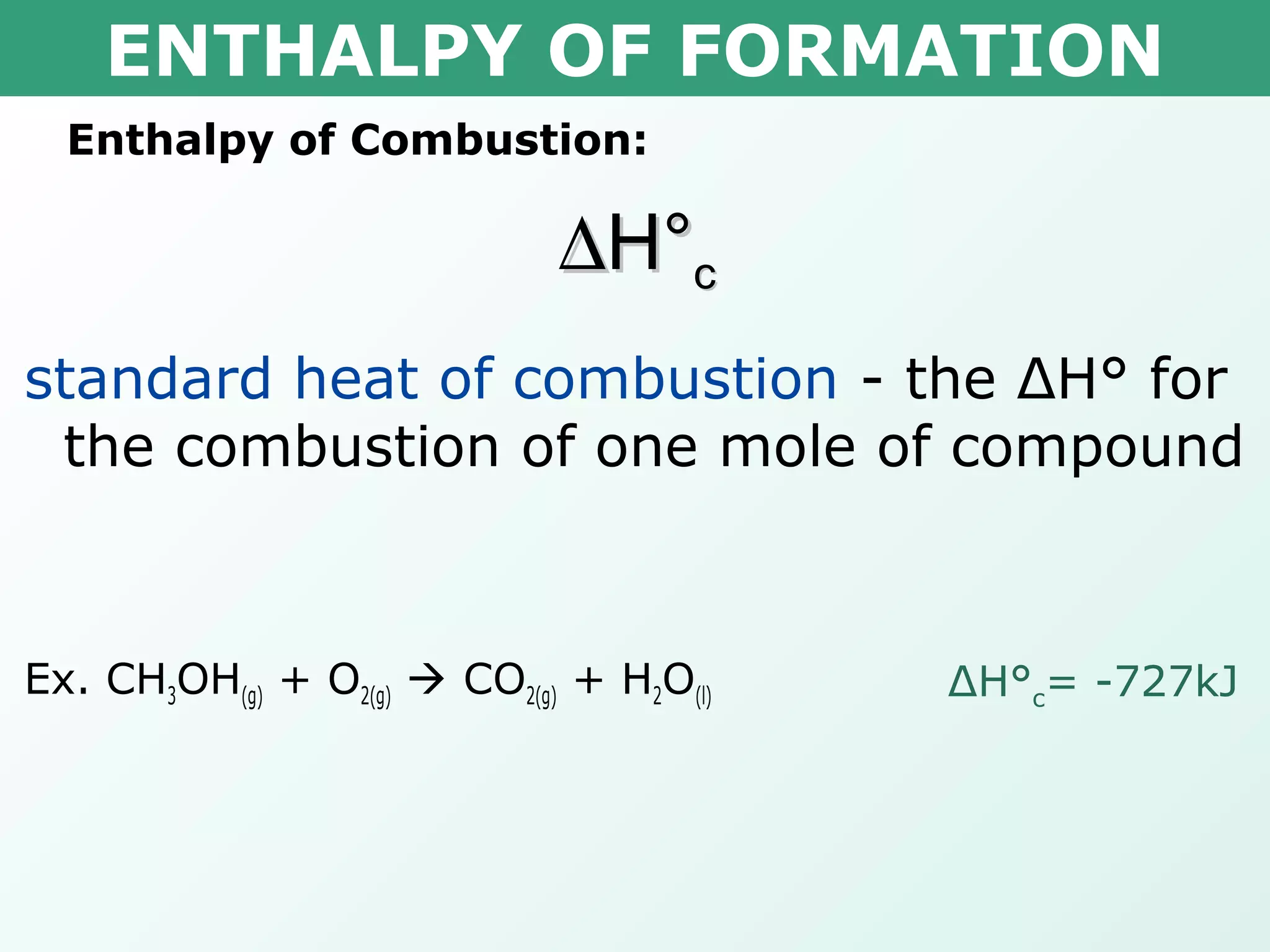
![ENTHALPY OF FORMATION
x 0.000kJ -393.5kJ -285.8kJ
ΔH° = ∑ΔH°f(products) - ∑ΔH°f(reactants)
-1386kJ= [(2 mol x -393.5kJ/mol) + (2 mol x -285.8kJ/mol)]
– [(1 mol x x) + (3 mol x 0.000kJ/mol)]
-1386kJ= -1358.6kJ – x
x = 27.4kJ
Therefore the heat of formation is 27.4kJ/mol
Calculate the ∆H°f for C2H4.
C2H4(g) + 3 O2(g) 2 CO2(g) + 2 H2O(l) ∆H°c = -1386 kJ](https://image.slidesharecdn.com/tang03-enthalpyofformationandcombustion-151023164414-lva1-app6891/75/Tang-03-enthalpy-of-formation-and-combustion-14-2048.jpg)
